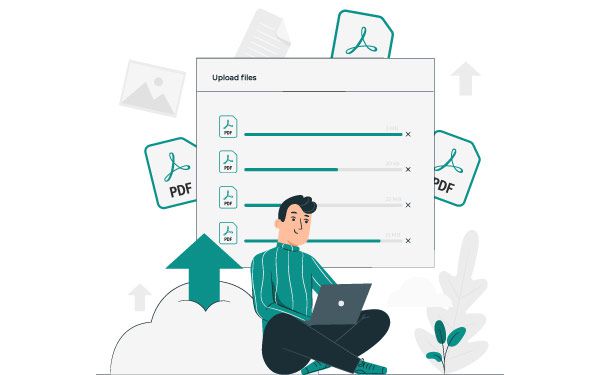Why Publishing Automation is Essential for Life Sciences Documentation

In today’s life sciences landscape, regulatory documentation is more critical – and more complex – than ever. From clinical study reports (CSRs) to investigator brochures and protocol amendments, every document must meet strict formatting and submission standards across global health authorities.
But the traditional approach? It’s slow, manual, and error-prone. In this blog, we explore how publishing automation addresses some of the most common pain points in life sciences documentation and why it’s quickly becoming a must-have for regulatory and medical writing teams.
The Challenge: Regulatory Documentation Is No Longer “Just Paperwork”
In regulated industries like pharmaceuticals, biotech, and medtech, documentation is part of the product. A small formatting inconsistency or QC failure can delay drug approvals or lead to rejections. Yet, many organizations still rely on Word templates, macros, or custom scripts that barely scale across departments or regions.
Manual document preparation creates bottlenecks in three key areas:
- Formatting: Applying templates, aligning tables, and meeting style guides
- Quality control: Verifying content against 450+ possible document errors
- Publishing: Converting, compiling, and submitting documents for review
This inefficiency isn’t just frustrating – it’s risky. Which is why automation is gaining ground.
What is Publishing Automation?
Publishing automation refers to the use of software tools that streamline document preparation for regulatory submissions. These tools automate formatting, quality control, and file compilation based on pre-configured rules and templates.
At its core, publishing automation combines:
- Rule-based engines for style and content compliance
- Template-driven formatting for Word and PDF consistency
- Integrated QC tools to catch errors early
- Cloud-based platforms for access control and collaboration
If you’re new to this space, platforms like Please+Publish offer a good overview of how automation works in a real-world life sciences context.
Key Benefits of Publishing Automation
1. Time Efficiency
Teams report up to 80% time savings by automating repetitive publishing tasks. Instead of spending hours checking styles or reformatting tables, teams can focus on content quality.
2. Error Reduction
Automation tools come with built-in QC rules that detect formatting inconsistencies, incorrect bookmarks, table overlaps, and more – reducing the burden on manual reviewers.
You can read about how QC Automation helps streamline this process.
3. Global Submission Readiness
Different agencies (like FDA, EMA, TGA, Health Canada) have different publishing requirements. Automated platforms help maintain submission-ready documents aligned with each region’s formatting expectations.
This is especially useful for global teams managing multiple submissions simultaneously.
Best Practices for Implementing Publishing Automation
Start with High-Volume Document Types
If your team regularly creates CSRs, IBs, protocols, or eCTD documents, these are excellent candidates to begin automation. These documents tend to follow fixed formats and benefit greatly from automated checks and formatting.
️ Involve Medical Writers and Regulatory Ops Early
Document authors often work in Word, while publishers convert to PDF and prepare for submission. Align both teams during implementation to ensure smooth transitions and efficient template usage.
Leverage QC Reports to Train Your Team
Many automation tools provide detailed QC reports. Use these as learning resources to help new team members understand document standards and compliance issues.
You can learn how automated QC checks are implemented at scale on the Please+Publish QC Automation page.
What About Security?
One common concern with cloud-based tools is data privacy. Good publishing automation platforms prioritize secure document handling through:
- Role-based access control
- Audit trails for all actions
- AES 256-bit encryption
- Compliance-ready hosting environments
For example, Please+Publish maintains certified data centers across the US, Germany, and Hong Kong and uses private-cloud infrastructure. Details on their Hosting & Data Security reflect best practices in life sciences document protection.
Real Use Cases in Life Sciences
Publishing automation isn’t just for large pharma. Small and mid-sized life sciences teams use these tools to:
- Support faster clinical trial startups
- Publish regulatory updates on tight deadlines
- Standardize medical writing deliverables across vendors
- Automate internal compliance reviews before submission
Want to see current trends? Check the Blogs section of Please+Publish for ongoing insights into document automation in life sciences.
Final Thoughts
Publishing automation is no longer a “nice-to-have” for regulatory teams – it’s a critical capability in an environment where speed, accuracy, and compliance are non-negotiable.
Whether you’re a regulatory operations specialist, medical writer, or clinical program manager, understanding the value of publishing automation helps you stay ahead in a highly regulated, high-stakes industry.
To learn more about how publishing automation is shaping the future of regulatory document management, visit Please+Publish and explore their insights, features, and industry updates.
Get the latest updates from Please+Publish
Recent Blogs
Previous Post
Next Post
CONNECT WITH US

Let's talk about how Please+Publish can help you








